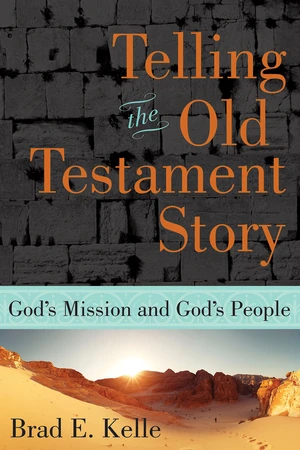While honoring the historical context and literary diversity of the Old Testament, Telling the Old Testament Story is a thematic reading that construes the OT as a complex but coherent narrative. Unlike standard, introductory textbooks that only cover basic backgroundand interpretive issues for each Old Testament book, this introductioncombines a thematic approach with careful exegetical attention torepresentative biblical texts, ultimately telling the macro-level story,while drawing out the multiple nuances present within different textsand traditions. The book works from the Protestant canonical arrangement of the OldTestament, which understands the story of the Old Testament as the storyof God and Godâs relationship with all creation in love andredemptionâa story that joins the New Testament to the Old. Within thisbroader story, the Old Testament presents the specific story of God andGodâs relationship with Israel as the people called, created, and formedto be Godâs covenant partner and instrument within creation. The Old Testament begins by introducing Godâs mission in Genesis. Thestory opens with the portrait of Godâs good, intended creation ofright-relationships (Gen 1â2) and the subsequent distortion of that goodcreation as a result of humanityâs rebellion (Gen 3â11). Genesis 12 andfollowing introduce Godâs commitment to restore creation back to theright-relationships and divine intentions with which it began. Comingout of Godâs new covenant engagement with creation in Gen 9, this divinepurpose begins with the calling of a people (who turn out to be themanifold descendants of Abraham and Sarah) to be Godâs instrument ofblessing for all creation and thus to reverse the curse brought on bysin. The diverse traditions that comprise the remainder of thePentateuch then combine to portray the creation and formation of Israelas a people prepared to be Godâs instrument of restoration and blessing.As the subsequent Old Testament books portray Israelâs life in the landand journey into and out of exile, the reader encounters complexperspectives on Israelâs attempts to understand who God is, who they areas Godâs people, and how, therefore, they ought to live out theiridentity as Godâs people within Godâs mission in the world. The finalprophetic books that conclude the Protestant Old Testament ultimatelygive the story of Godâs mission and people an open-ended quality,suggesting that Godâs mission for Godâs people continues and leadingChristian readers to consider the New Testamentâs story of the Church asan extension and expansion of the broader story of God introduced inthe Old Testament. The main methodological perspective that informs the book includes workon the phenomenological function of narrative (especially storyâsfunction to shape the identity and practice of the reader), as well asmore recent so-called âmissionalâ approaches to reading Christianscripture. Canonical criticism provides the primary means for relatingthe distinctive voices within the Old Testament texts that still honorthe particularity and diversity of the discrete compositions. Accessibly written, this book invites readers to enter imaginativelyinto the biblical story and find the Old Testament's lively andenduring implications.
Price history
▲17.15%
Feb 13, 2022
€35.19
Oct 25, 2021
€30.04

